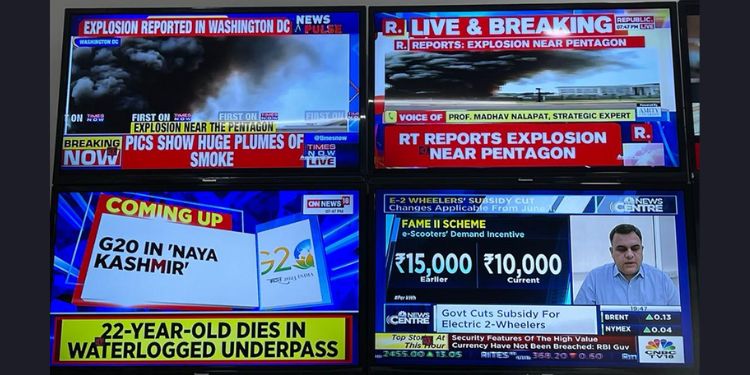New Delhi: On Monday, a photo of an ‘explosion’ at the Pentagon, the headquarters of the US Department of Defense went viral on Twitter. The image showcased a massive plume of black smoke near a building, creating a sense of panic and urgency. It was later revealed that the image was generated by AI. However, several Indian news channels ran “breaking news” report of the purported explosion, without conducting the necessary fact-checking.
Many verified accounts were tweeting about the explosion including news outlet Russia Today. Several Indian news channels then broadcast “breaking news” coverage of the purported explosion, some of them even interviewed international affairs experts.
Police and fire officials in Arlington, Virginia, were forced to clarify the media in which they stated that the image is not real and there was no incident at the U.S. Department of Defense headquarters.
Later it was revealed that the image was AI generated, However, the way in which many of the news channels hurried in reporting the breaking news without taking steps to verify the news has put those channels in a fix. The incident has once against highlighted the eroding value for trustworthy and fact based news in the world of breaking news mongering news media.
In TV news segment, however, there were few channels who did not carry this report. For instance CNN-News18 was focusing on the G-20 meeting in Kashmir without jumping into it in a hurry.
Such incident of refusal to engage in AI-generated fake news and staying rooted to verified news reflects their commitment to fact-checking and placing truth and accuracy above sensationalism in the age of breaking news and Twitter led narratives.
With Twitter handles becoming paid and AI driven content taking center stage, it has become pertinent for news channels to do a proper fact check before breaking any news. The speed driven newsrooms need to take a step back and bring focus back on authenticity.

















